Investments We Avoid – Why Betting the Favorite Can Be a Loser’s Game and the Curious Case of Costco
Investing in stocks is in some respects very similar to betting on sports. Avid fans place bets regularly based on their view of a game’s outcome and the betting odds. If presented with 50/50 odds on your perceived favorite, a gambler would take that bet every time. What if the betting markets had your team at a 95% favorite to win? If you are correct, you stand to make only a small profit yet vs losing big on the off chance your team has a poor showing. A great team doesn’t necessarily make for a great bet. You have to understand the odds relative to their chance of winning.
In the stock market, the market value of a stock implies the odds of success or failure for a company. High valuations indicate the market has assigned a high probability of “winning” and vice versa. As part of our research process, we use some math to uncover market expectations for a company and compare it to our own expectations to determine whether the odds are in our favor. Currently, we believe a number of large and mature companies offer poor odds for investors. To better illustrate this concept, this writing will the case of Costco and how betting on the favorite could be a bad idea.
As a reminder, our investment philosophy requires a margin of safety in that we have reason to believe the stock is trading at a significant discount to its fair value. Further, we believe that understanding competitive advantages and management incentives helps us to better understand the company and its appropriate valuation.
Now, let’s look at Costco:
Costco – Costco has been a dynamo in club shopping. The business model has been poured over due to its success. Customers love to shop there and reward them with more and more sales year after year. However, investors appear to have gone too far in what they are willing to pay and the odds implied by such a price. In the current fiscal year, Costco is expected to reach about $275B in sales generated over $8B in profits, but the company's price tag sits at a lofty $445B. Investors are paying roughly 55 times profits, which last happened for this company in 1995.
Source: FactSet
This proved to be a bargain as Costco had enormous growth opportunities, opening stores across the country. Today, there are 628 Costco locations. You likely live close to one, or close to a competing Sam’s or BJ’s. Are Costco’s current growth opportunities as great as they were 30 years ago? The market seems to think so. Let’s put a pencil to those odds.
Over the past 5 years Costco has grown its free cash flow by roughly 15% per year. Eventually, all companies must slow as they saturate their market. In this example, I’ll assume they eventually slow to 4% and do that into eternity. How long must they maintain a 15% growth rate to justify today’s price?
The answer may surprise you: 9 more years! What are the odds?
Luckily, we can look at history as a guide. Credit Suisse has a free publication called The Base Rate Book which provides statistical probabilities of companies from 1950 through 2015.
The historical odds of a large company like Costco growing their revenue by 15% for a decade are somewhere between 1% and 3%. In fact, Costco is only expanding their store count by around 3% per year. Now maybe they can find a way to expand margins so cash flow can grow faster than revenue, but it would be quite a challenge in such a competitive industry.
Source: The Base Rate Book, Credit Suisse
The market price of Costco assumes a long-term growth rate that is historically a long shot. The math says that if Costco achieves these growth rates, the company is fairly priced, and you should expect a similar return as the market. You would need to expect Costco to beat those expectations in order to justify buying the stock.
What if Costco Underperforms These Expectations?
If Costco performed the incredible feat of growing cash flow for another 5 years at 15% before slowing down, the stock is worth about 29% less than the current market value. If they can only do it 3 more years, it’s worth 40% less. Should Costco hit any real hiccups, it gets much worse. There is no room for error, no margin of safety.
Is it possible that Costco has an ace up its sleeve and defies the odds? Yes, there is a chance this post ages poorly. However, investing is like betting, and history suggests the odds are long. I’m more than comfortable passing on this one.
In Conclusion
In investing, it’s not enough to identify the favorites. You must also sharpen your pencil to understand the odds. To learn more about our portfolios, please reach out to us or visit www.auroramgt.com
Invest Curiously,
Austin
Austin Crites, CFA
Chief Investment Officer
Aurora Asset Management/Aurora Financial Strategies




